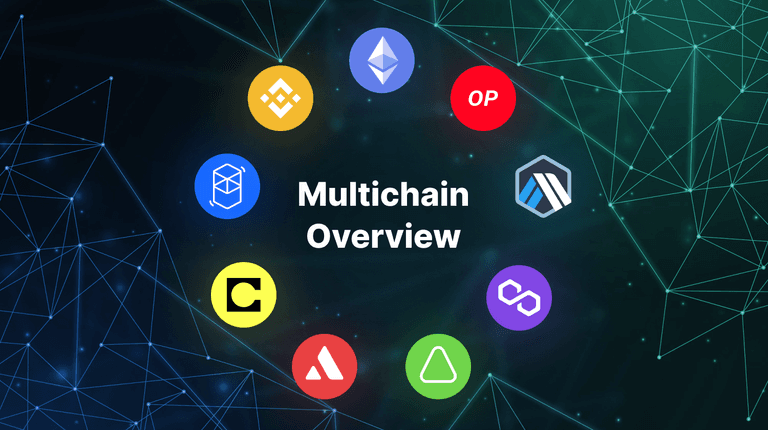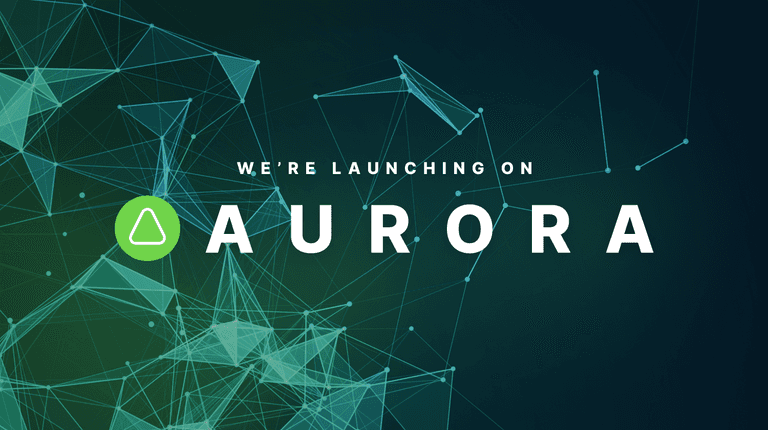Aurora
Discover tokens of Aurora – a DeFi-focused, fast and scalable blockchain with a multi-chain architecture, cross-chain transfers, and low gas fees.
All You Need to Know About Aurora
Aurora is a blockchain solution built on the NEAR Protocol that provides a high-throughput, scalable, and low-cost platform for Ethereum developers to deploy their applications. Using Aurora's EVM, developers can port their Ethereum native applications seamlessly to NEAR's L2-like network while enjoying familiar Ethereum tooling. Aurora's base fee is in ETH, providing a smooth experience for dApps' users. Additionally, Aurora developed the Rainbow Bridge, which enables users to transfer assets between Ethereum, NEAR, and Aurora.
How does Aurora work?
Aurora operates entirely as a smart contract placed on the NEAR blockchain. NEAR by itself is not an EVM-compatible chain, but Aurora provides this functionality to serve as a kind of L2 on top of NEAR. Aurora inherits all its technical properties from NEAR - consensus, fee structure, finality speed, and so forth.
ERC-20 tokens that originate on Ethereum are bridged over to NEAR and from there to Aurora, however, this process does not work the other way around. For example, tokens that originate on Aurora cannot be bridged to NEAR.
NEAR protocol
NEAR Protocol is a decentralized application platform that aims to make it easier for developers to build and operate decentralized applications (dApps) on the blockchain. The protocol provides a secure and scalable infrastructure for the development of dApps and allows developers to easily create and manage smart contracts. With its focus on usability, NEAR aims to make blockchain technology accessible to mainstream developers and users.
- Designed for mass user adoption - scalable, intuitive
- Beginner-friendly L1 blockchain
- Non-EVM native dApps
Consensus engine
Aurora uses a NEAR inherited proof-of-stake consensus mechanism. In this system, validators are chosen based on their ownership of NEAR tokens. The more tokens a validator has, the greater their chances of being selected to validate transactions.
Validators are responsible for creating new blocks and verifying the transactions contained within them. They do this by running a node that maintains a copy of the blockchain and participating in consensus rounds to determine the next block in the chain.
NEAR uses a sharded blockchain architecture to improve scalability. In this system, the blockchain is split into smaller, more manageable shards. Each shard can process transactions independently, allowing for faster transaction speeds and increased network capacity.
Key concepts
EVM-compatibility
Aurora uses a special implementation Ethereum virtual machine called SputnikVM. EVM compatibility enables any blockchain to execute smart contracts written in Solidity, the programming language used for Ethereum's smart contracts. This feature simplifies the process of transitioning Ethereum-based dApps to other EVM-compatible chains, such as Aurora. By enabling easy migration of projects, EVM compatibility expands the potential use cases of both Ethereum and Aurora
Moreover, EVM compatibility enhances interoperability between chains, enabling cross-chain compatibility and the creation of new decentralized applications that can function across multiple blockchains. It provides developers with greater flexibility in selecting the blockchain that best suits their requirements while retaining the ability to run their dApps smoothly.
Nightshade Sharding mechanism
Sharding is a technique used in blockchain technology to improve scalability and transaction speed. Instead of having every node on the network validate every transaction, the network is divided into smaller groups of nodes called shards.
Each shard is responsible for validating transactions within its own group. This allows for more transactions to be processed simultaneously and reduces the time and energy required for validation. The NEAR protocol is an example of a sharded blockchain that uses this technique to achieve high throughput and low latency.
Rainbow bridge
This bridge was built to ensure a seamless connection between the two ecosystems - NEAR and Ethereum. It is optimized not to require trust in the bridge itself, but only in the two connecting systems. The bridge serves as a decentralized and trustless connection point.
- Ethereum to NEAR and backward
- NEAR to Aurora and backward
- Aurora to Ethereum and backward
The AURORA token
AURORA token is used to participate in the governance of the Aurora chain. Aurora is governed in a decentralized manner by the AuroraDAO. Members of the DAO vote and submit proposals for changes to the network according to their stake of AURORA tokens.
- AURORA is used to create and vote on proposals
- AURORA is not used as a reward for validators
- AURORA is not used as a payment for gas fees (ETH is used)
Use cases and applications of Aurora
Aurora features a broad ecosystem of decentralized application from DeFi to Gaming. Thanks to its EVM compatibility, developers can easily port their projects from other chains. A number of well-established protocols have added Aurora to their list of supported chains to further promote cross-chain interoperability. Apart from that, Aurora offers a range of native applications.
DeFi - Pretty much a one-stop shop in Aurora DeFi is the Bastion protocol - money market, stableswap. The most used DEX on Aurora is Trisolaris, which is a fork of Uniswap with incentivized liquidity farming dual rewards and wast selection of tokens.
NFTs - While the majority of the assets is locked in DeFi apps, the NFT market on Aurora has just started emerging. With low fees and fast transaction times, it could provide a competitive NFT environment. Prominent projects include TofuNFT, 1MilNFTs and Nifty Row.
FAQs
Are Near and Aurora the same?
Aurora can be thought of as a Layer 2 on top of Near. They use the same underlying technology, like consensus mechanism, but Aurora is an EVM-compatible chain. All transactions are formally processed on Near and the final result is transferred to Aurora.
What blockchain is Aurora?
Aurora has its own blockchain, which relies heavily on the underlying technology on Near protocol. The entire Aurora blockchain is executed as a smart contract on the Near blockchain.
How to add Aurora to Metamask?
To add the Aurora network manually, open your Metamask wallet and expand the network button in the top right corner. From there, you should see a button saying "Add Network". When you click on that button, Metamask will show you some popular networks to add, including the Aurora network. Simply select the plus button next to the network you wish to add.
Why is Near protocol unique?
Near protocol excels in its technical properties, such as very high speed and scalability. Is is one of the few projects that have implemented sharding mechanism into its consensus. The project has a strong team of developers behind it and is oriented heavily on ease of use and friendly UI.
Is Aurora an ERC-20 token?
Aurora, as an EVM-compatible chain uses the ERC-20 token standard. Auroras native token also subjects to this. Thanks to the interoperability users can easily import any token from Aurora to Ethereum, and the other way around.


